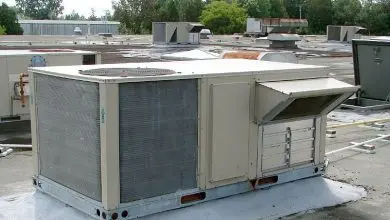Best self-employed tax tips in Canada

Self-employment in Canada offers numerous advantages, including greater control over your work and potential for higher earnings. However, it also brings specific responsibilities, particularly concerning taxes. Unlike traditional employees, self-employed individuals are responsible for managing their own tax obligations and optimizing deductions in compliance with the Canada Revenue Agency (CRA). To help simplify this process and maximize your earnings, here are five essential Canadian self-employed tax tips that every entrepreneur should know.
Keep Detailed Records of Your Expenses
Maintaining thorough and accurate records of your business expenses is one of the most effective ways to reduce your self-employment tax liability. The CRA allows you to deduct various business-related expenses from your taxable income, which can significantly lower the amount of tax you owe. Eligible expenses typically include office supplies, travel costs, advertising, and even a portion of your home office expenses if you operate your business from home.
Brands Insider emphasizes the importance of detailed financial documentation to minimize taxable income and safeguard against potential CRA audits. It’s crucial that all expenses claimed are strictly related to your business. Keeping organized receipts, invoices, and bank statements simplifies tax deduction claims and ensures compliance.
Many freelancers overlook the extensive range of deductible expenses available. Tracking every business cost, regardless of size, can have a considerable impact on your tax bill. Utilizing reliable accounting software can also aid in efficiently managing and organizing your financial records.
Understand the Importance of GST/HST Registration
In Canada, businesses with annual taxable revenues exceeding $30,000 are required to register for the Goods and Services Tax (GST) or the Harmonized Sales Tax (HST). GST/HST registration enables you to charge tax on your goods and services and remit the collected amount to the CRA. Additionally, it allows you to claim Input Tax Credits (ITCs) for GST/HST paid on eligible business expenses.
Economy Insider highlights that many self-employed individuals are unaware of the advantages of GST/HST registration. Registering allows you to recover taxes paid on business purchases, which can lead to significant savings, especially if you regularly invest in supplies or equipment. Even if your annual revenue is below $30,000, voluntary registration can be beneficial.
Keep in mind that GST/HST registration involves filing periodic returns and remitting collected taxes to the CRA. When managed correctly, it can assist in optimizing your tax strategy and reducing net expenses.
Maximize Your RRSP Contributions
As a self-employed individual, while you cannot participate in employer pension plans, you can contribute to a Registered Retirement Savings Plan (RRSP). RRSP contributions allow you to set aside a portion of your income annually, thereby lowering your taxable income and reducing your overall tax burden while building your retirement savings.
Your available contribution room is determined by your previous income and unused limits from prior years. Leveraging RRSP contributions smartly can substantially decrease your business income taxes. Since RRSP contributions are deductible in the year they are made, they provide immediate tax relief.
Experts like those at brands insider recommend consulting a financial advisor to determine the optimal annual contribution amount that fits within your RRSP limits, ensuring you maximize tax savings while securing your financial future.
Deduct a Portion of Your Home Office Expenses
With many self-employed Canadians working from home, it’s important to know that you may qualify to deduct certain home office expenses. These costs can include utilities, rent or mortgage interest, property taxes, and home insurance, provided the space is used exclusively or primarily for business activities such as administrative work or client meetings.
According to economic insider, the CRA permits you to claim a portion of your home expenses based on the percentage of your home used as a workspace. For example, if you use one room in a five-room house as an office, you could deduct 20% of applicable home expenses. Additionally, business-related maintenance costs like repairs and office supplies are also deductible.
Maintaining precise records of your home office’s dimensions and related expenses is crucial when claiming this deduction. Remember, the workspace must be used specifically for business purposes, not merely convenience, to qualify.
Set Aside Money for Taxes Throughout the Year
One common challenge for self-employed individuals is consistently setting aside funds for tax obligations. Unlike employees whose taxes are withheld at source, self-employed Canadians must manage their tax payments independently, including income tax and Canada Pension Plan (CPP) contributions. Failing to save during the year can result in a significant tax bill during filing season.
To avoid surprises, it’s wise to allocate approximately 25% to 30% of your net income for taxes, though this can vary based on your earnings, eligible deductions, and tax bracket. Many self-employed workers opt to make regular instalment payments to the CRA, easing the year-end tax burden.
Tax experts at Brands recommend establishing a dedicated tax savings account to ensure funds are reserved specifically for tax payments, helping you stay on track and avoid financial strain. Proactive tax planning is essential to maintain business cash flow and financial stability.
Additionally, if you’re interested in learning more about “5 Ways to Make it Easier for Customer Engagement,” please visit our “Finance” category for further valuable resources and insights.
For self-employed Canadians, staying informed about tax regulations and leveraging available deductions not only ensures compliance but also enhances profitability. The complexity of tax laws can be daunting, but proactive management—like timely GST/HST registration, diligent expense tracking, and maximizing registered savings—empowers entrepreneurs to efficiently manage their finances. Moreover, understanding how to claim home office expenses and systematically save for taxes throughout the year can prevent costly errors and optimize your take-home income. Regular consultation with tax professionals or financial advisors can further tailor strategies to your unique business needs, ensuring sustained growth and financial security.





